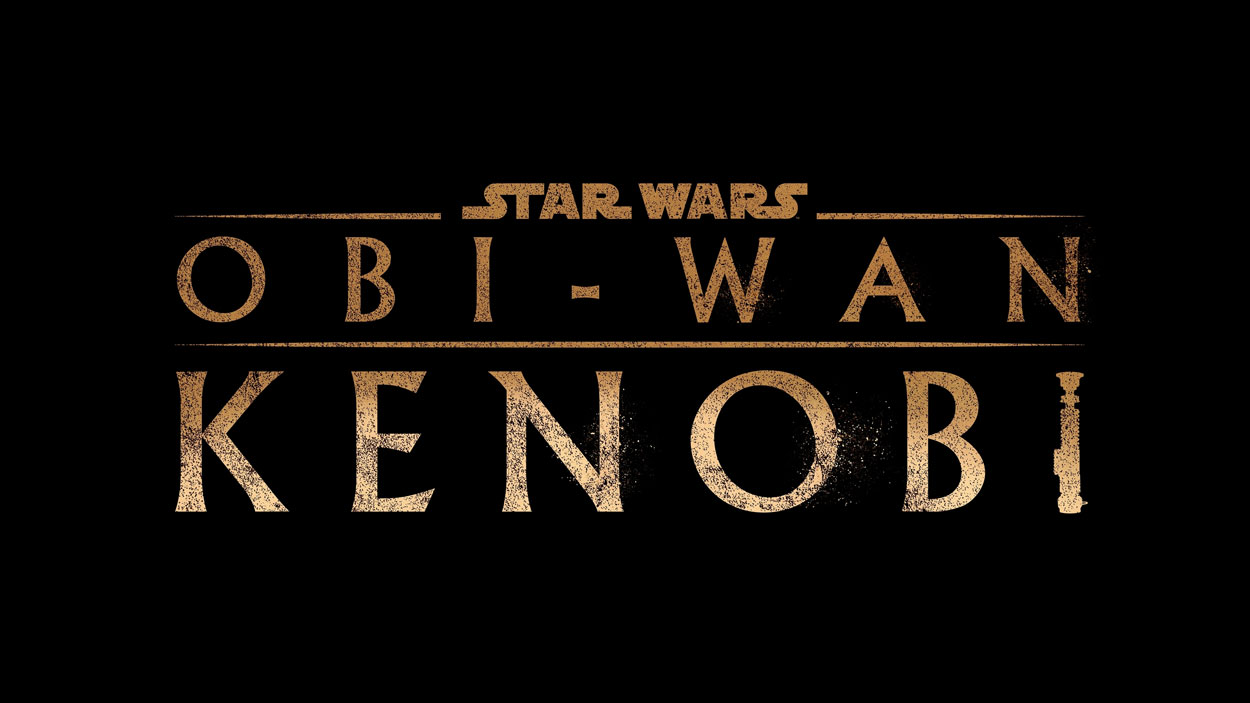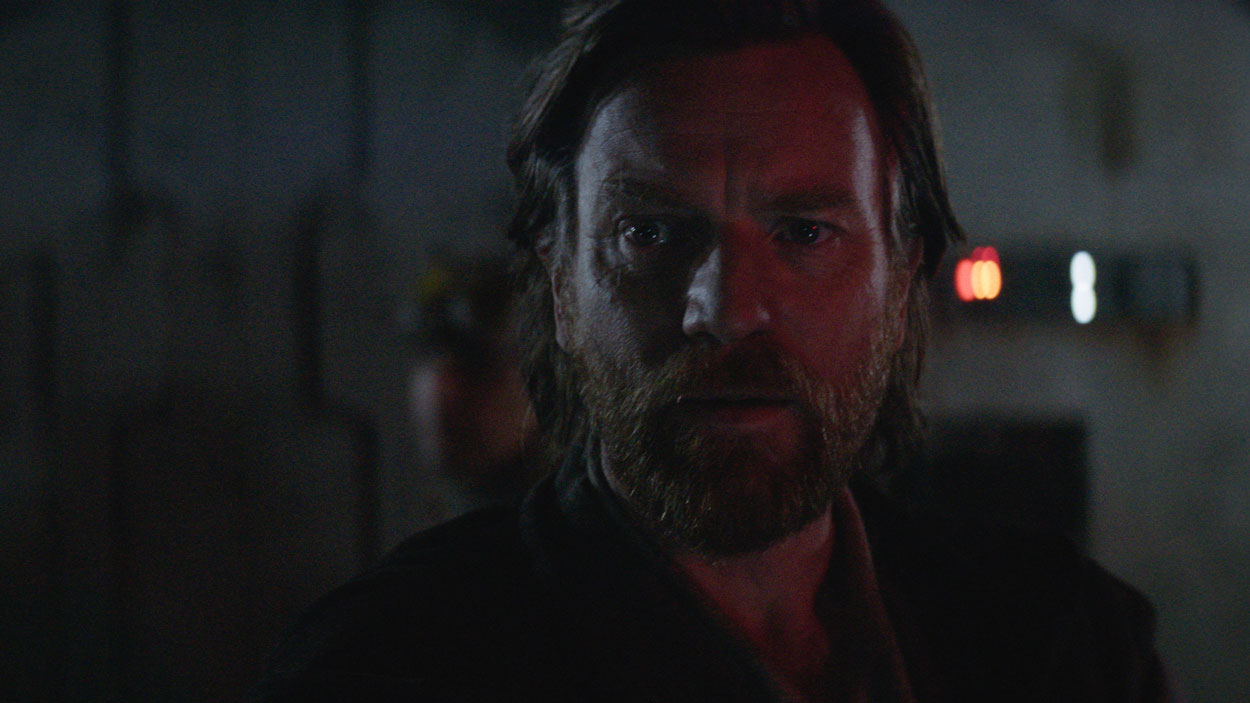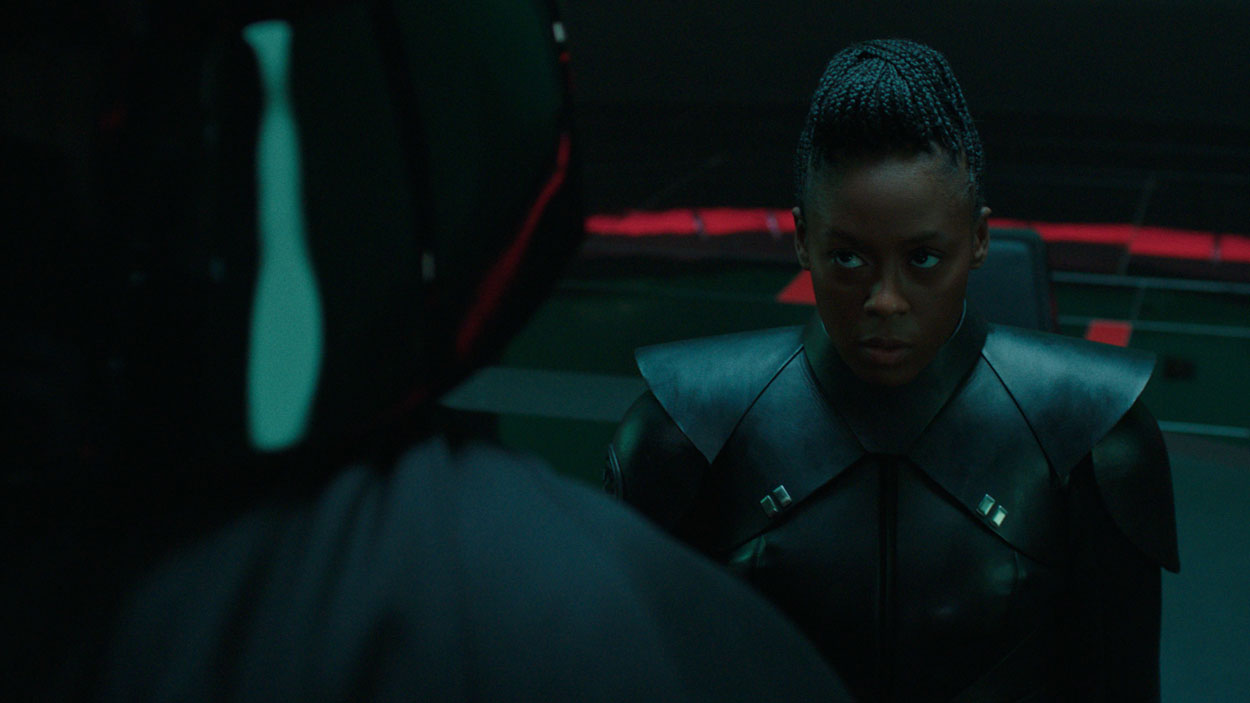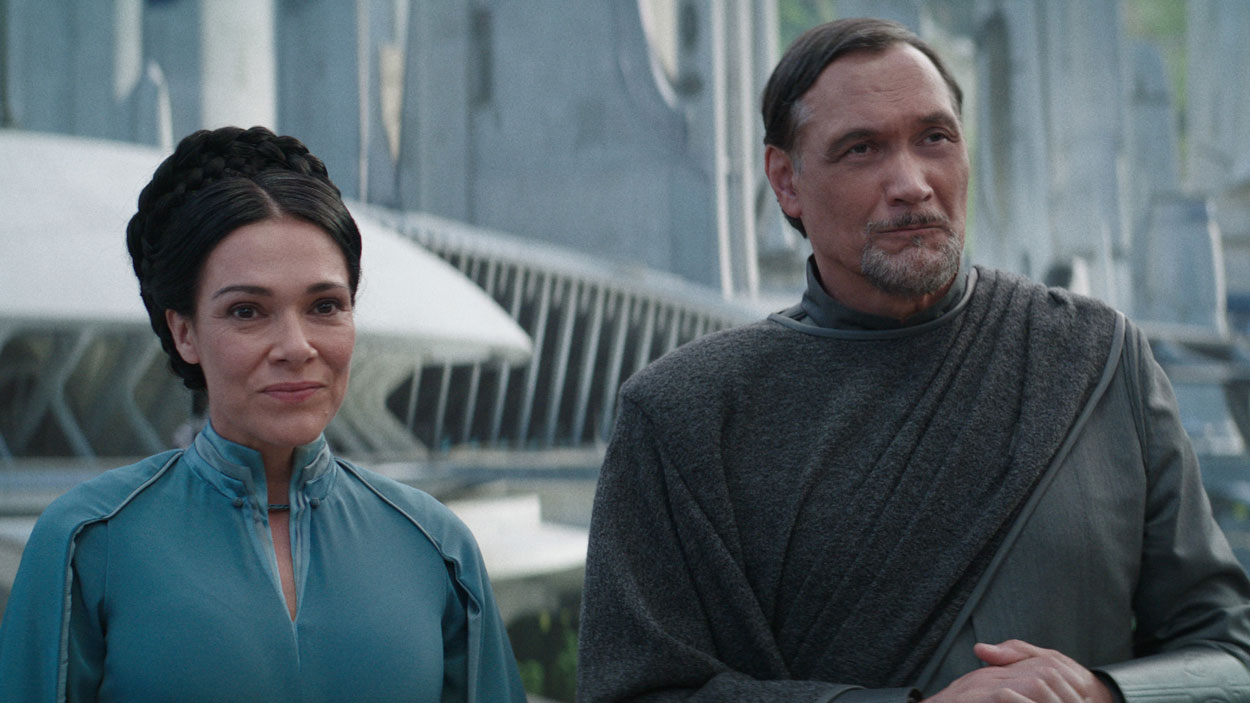Obi-Wan Kenobi, Part VI and a Series Retrospective
June 30, 2022

WARNING: The following contains spoilers for Obi-Wan Kenobi Parts I-VI.
To say Obi-Wan Kenobi has been something of an emotional rollercoaster for Star Wars fans would be understating it. From the earliest photos to the somewhat rocky start with Part I and II releasing simultaneously to controversy over Moses Ingram’s character, the entire series has had a strange lifecycle. In many ways, I wish I had stayed out of the places the fandom inhabits (whether on Reddit, Youtube or Twitter) as I watched the series, as I genuinely believe my viewing experience would have been better had I done so.
Fandom controversies aside, Part IV of Obi-Wan Kenobi had a seriously difficult task. It needed to not only put a pin in the comparatively smaller story in the series—it also needed to bookend the end of the prequel trilogy and beginning of the original trilogy in a way that made sense. I’m going to ignore for now the talks of a season 2—Disney may find a way to squeeze more milk out of this exhausted heifer but until they announce it I’m going to pretend this is all we’re going to get.
The final episode opens right as the last one ended. Obi-Wan and the Path members are fleeing from the Imperials in a badly-battered ship in a scene that echoes the escape from the Death Star in A New Hope. The hyperdrive is “almost ready”—a lie that Path leader Roken tells to alleviate the anxiety of his crew. Obi-Wan sees through the lie and realises that unless he does something, there’s no hope for any of them. The entire situation did feel somewhat contrived but of course, Star Wars is no stranger to creating a perfect problem at the exact wrong moment in order to inspire our heroes to do something crazy (so crazy that it just might work). Obi-Wan takes the opportunity to devise a distraction—he’ll fly an escape pod to draw Vader’s attention away from the Path and from Leia. He takes a calculated risk and it pays off—Vader is still blinded by his hatred for Obi-Wan and against the counsel of the Grand Inquisitor, diverts course to face his former master alone.

Meanwhile, Reva has mysteriously recovered from her second stab wound (most of us would count ourselves lucky to survive a single stab wound, but two?) and is hunting Owen on Tatooine. How she (a) survived, (b) found a ship with a functioning hyperdrive and (c) made the mental leap from the faulty answering machine that the children Bail Organa is talking about are the long-lost kids of her former boss . . . is beyond me. Yes, that was a long-winded statement but internal consistency has never been strong in the series so as I said in a previous review, it’s just par for the course. The main thing is, she’s here, she’s mad, and she totally wants to . . . kill Luke? Kill Owen? Kill . . . someone? Honestly, her motivations are so skewed at this point that it’s difficult to understand what she wants anymore. She’s given up hunting Obi-Wan as she’s given up on her plan to murder Darth Vader. What does she have left? Does she want to kill Luke in order to make Vader feel the loss of innocence only associated with childhood? But if he doesn’t know Luke is his son, how will he ever know that he lost him to begin with? Such questions are never answered and we can parse from Reva’s pained actions that even she doesn’t know what she wants anymore. Perhaps she’s so embittered by her past trauma and failures that all she wants to do at this point is lash out at whatever’s around her. Who she hopes to hurt at this point is anyone’s guess.
Perhaps the best moment of the show came back on the lonely planet where Vader and Kenobi have their final duel. In an inversion of their previous duel on Mapuzzo, this time Obi-Wan has the upper hand. Seemingly defeated and buried under a mountain of rocks, he performs the expected heroic comeback, beating back Vader and in a triumphal moment, partially unmasking his former padawan and friend. The sound production in this moment is excellent—blending James Earl Jones’ commanding tones with the younger, familiar voice of Hayden Christensen.
The exchange between the two is heartfelt—Obi-Wan still pleading with his friend to turn his back on the Empire (though there’s a missed opportunity to set-up a payoff in Return of the Jedi where Vader tells Luke that Obi-Wan used to think “there was still good in him”). Vader proudly declares: “I am not your failure, Obi-Wan. You didn’t kill Anakin Skywalker . . . I did.”
“Then my friend is truly dead. Goodbye . . . Darth,” replies Obi-Wan in a nice nod to his remarks to Vader in A New Hope. Obi-Wan leaves Vader broken and bleeding. Though the comparisons between this encounter and the one between Vader and Ahsoka Tano in Rebels was notable, I couldn’t help but feel satisfied. The next time (presumably) the two will meet again will be aboard the Death Star in A New Hope, thus completing the character arc that began all the way back in The Phantom Menace.
Back on Tatooine, Reva has tracked down Owen and his family. They fortify the farm and prepare for the incursion, covered by the best protection any TV character can be safeguarded by: plot armour. Reva attacks, injurs but doesn’t kill both Owen and Beru and chases Luke into the desert. Eventually Luke is in her grasp . . . but when she has her opportunity to strike the kid down, she can’t do it. Maybe she sees herself in Luke. Maybe her years of repressed trauma are finally given the opportunity to come spilling out. Maybe the original trilogy requires Luke not to. Whatever the case, Luke is spared and Obi-Wan and Reva share a final moment. She breaks down and lets go of her hatred, rising as a new person.
This was the part of the episode that I was most surprised by. I had originally predicted that Reva would either give her life to save Luke (or Leia) or die at the hands of Vader. In a strange way, she does both and neither. Her motivations are unclear even at the end. What does she hope to achieve, apart from simply inflicting more pain and suffering on the world? If you’ve been following my reviews, you’ll know I haven’t been the biggest fan of Reva’s character direction. Don’t get me wrong—I have nothing against the character herself. I think if Disney had set out to make an interesting Inquisitors show, she would have been a fantastic lead. The moral conflicts, ridiculous drama and surprise plot twists would have made for a wonderful series. I just don’t think it fits well within a series about Obi-Wan. Having said that, I’m glad they didn’t simply kill her off at the end. It would have been the simpler option and would have tied up all the loose ends neatly. Having Reva still out there complicates the plot: now there’s someone else apart from the small cast of established characters who knows the truth about Luke and Leia. We now also have an ex-jedi, ex-Inquisitor running around the galaxy trying to work out her own path (maybe a more grey path like that of Ahsoka’s?). I have no doubt that Disney has plans for her character and whether or not she ends up dead before the events of Episode IV, I hope that she will get the treatment her character deserves.

what does it all mean?
In some ways this series is a redemption arc of both Reva and Obi-Wan. They both begin at opposite ends of the spectrum. Obi-Wan is an exiled light-side-of-the-force user. He’s timid, not confident in his abilities and above all else, unwilling to take the initiative as he once did. On the other hand, Reva is part of the establishment. As a dark-side-of-the-force user, she’s confident, self-assured and willing to do risky things to achieve her goals. Often this backfires in her face, yet it does not stop her from boldly going after what she wants. Through the course of the series, the two learn from each other and change. Obi-Wan regains some of his lost confidence—the confidence required to save Leia and confront Vader. He also couples this with the wisdom associated with Alec Guinness’s Obi-Wan—the wisdom required to save Reva. Reva herself finds redemption in sparing Luke at the very end. Though it’s contrived in my opinion, it serves as a pivot point for her character—does she slay the child and continue the legacy of death and suffering or does she spare him and in doing so, save herself from her own hatred?
Ultimately, Obi-Wan Kenobi to me is a story about friendship, duty and redemption. Leia serves as a moral anchor in a morally ambiguous world. It’s a world where good guys become bad, bad guys become good and the tension between light and darkness forever swings back and forth like a yo-yo. The story of Obi-Wan and Anakin is that of good intentions colliding with an unyielding system of bureaucracy. Though the Empire is a truly evil system of government, it was the Republic that enabled Anakin to be manipulated to become Darth Vader. It goes to show that even traditionally “good” systems aren’t immune corruption and mismanagement. Possessing good intentions isn’t enough; as James the brother of Jesus once said: “faith without good works is dead” (James 2:26). Though it’s not a perfect parallel, we’ve seen numerous examples over the last few years of fiction characters who’ve undergone horrific transformations due to the callous indifference of the establishment (Joaquin Phoenix’s Joker is notable). Obi-Wan’s remarks at the end of Part VI echo his declaration in Revenge of the Sith: “I have failed you Anakin. I have failed you.”

Though the Star Wars universe as we find it in Obi-Wan Kenobi is bleak, there’s always hope. Leia represents in the series a bright spark of youthful innocence: the hopeful spirit that will go on to form the seed of rebellion a decade later. Obi-Wan goes through his own transformation in the course of the series—from exile and passivity to action and responsibility. I didn’t love every choice the showrunners made with the direction of the series but recent attempts Disney has made in the Star Wars universe reminds me that things could have been a whole lot worse.
the symbolic arc
One thing I can say for sure: the legacy of Obi-Wan Kenobi is not completely untarnished but as a fan of Star Wars I can’t help but love it. As George Lucas has stated numerous times, Star Wars is a story about redemption. It’s about fathers and sons, terrible loss and finding hope in the midst of that loss. The tragedy of Obi-Wan’s story is that he isn’t able to redeem Anakin. The hope is that through his mentorship of Luke, one day the father will find his way back to the light. It’s telling that in Return of the Jedi the act that changes Vader’s mind isn’t more violence; rather it’s the laying down of his lightsaber as he says: “I am a jedi, like my father before me.” The dynamic between parents and their children is something Lucas evidently thought of a lot and it comes through in his filmmaking. “[Parents] don’t want to be Darth Vader. As Luke says, ‘I have faith in you, even though the rest of the universe thinks you’re a schmuck.'”
If you’re at all familiar with the story of Jesus, the parallels will be unmistakable. In fact, the story of Star Wars is in some ways an inversion of the story of Jesus using the same thematic elements. Instead of a tyrannical father saved by his children, we have a benevolent Father stepping into the mess of the world to save His children through, ironically, the giving of His own child. Jesus enters into a world in chaos and declares that a new Kingdom is coming and that indeed “it is already among you” (Luke 17:21). He is hailed as a hero—even being welcomed into Jerusalem, the capital of Israel, as a triumphant king in Luke 19. And yet, Jesus redeems God’s children the same way Luke redeems Anakin: not through furthering violence but by non-violent sacrifice.
It goes to show that almost every successful good-and-evil story (whether books, film or TV) rely on the “Greatest Story Ever Told” (as some Christians call the story of Jesus) as their thematic backdrop. Whether you believe in Jesus’ story or not, there’s something undeniable in its themes—the rejection of violence, redemptive sacrifice and the hopeful restoration of all things. There’s a reason why we return to Jesus continually AND why modern storytelling leans so heavily on His narrative. Perhaps it’s no surprise. After all, when you boil it down, it’s the only story that truly matters.
Jesse Herford is a pastor and associate editor for the Australian/New Zealand edition of Signs of the Times. He lives in Sydney, Australia with his wife, Carina and their dog, Banjo.









